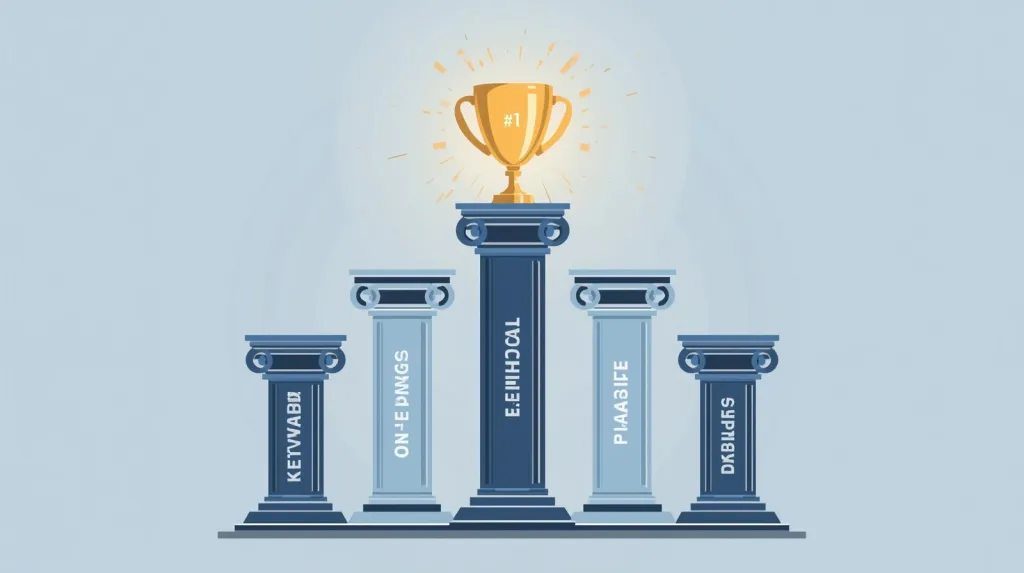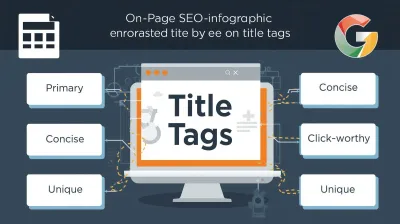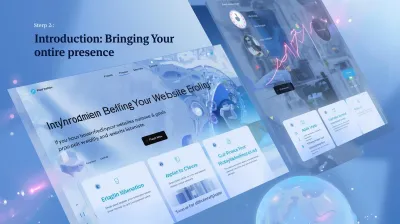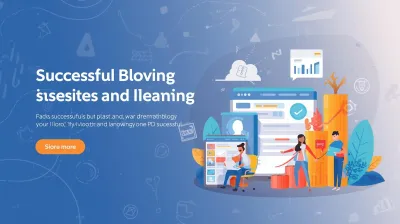Search Engine Optimization (SEO) might sound technical, but its core principles are about making your website valuable and easily understood by both users and search engines like Google. Mastering these SEO fundamentals is the essential first step to increasing your site's visibility and attracting organic traffic. Let's break down the core pillars you need to focus on.
Pillar 1: Keyword Research - Understanding User Intent
Everything starts with understanding what your potential audience is searching for. Keyword research isn't just about finding popular terms; it's about understanding the *intent* behind those searches.
- Identify Topics:** What general subjects does your website cover?
Find Keywords:** Use tools (Google Keyword Planner, free tools, Google suggestions) to find specific search terms related to your topics. Look for terms with reasonable search volume and achievable difficulty.Analyze Intent:** Is the user looking for information (informational), comparing options (commercial investigation), or ready to buy/act (transactional)?Map Keywords:** Assign relevant keywords to specific pages on your site that best satisfy the user's intent for that keyword.
Knowing your keywords informs your content strategy and on-page optimization efforts.
Pillar 2: On-Page SEO - Optimizing Your Content
On-page SEO involves optimizing the elements *on* your actual web pages to make them clear and relevant for both search engines and readers.
- [cite_start]
- Title Tags & Meta Descriptions:** Craft compelling titles (under 60 characters) and descriptions (under 160 characters) that include your target keyword and encourage clicks from search results [cite: 1543-1544].
Headings (H1, H2, H3):** Structure your content logically using headings. Use one H1 for the main title and H2s/H3s for subtopics. Incorporate keywords naturally within headings.Content Quality:** Create comprehensive, well-written, original content that thoroughly answers the user's query for your target keyword. Readability matters!Keyword Integration:** Place your main keyword naturally in the title, first paragraph, headings, and throughout the body text. Use related terms (LSI keywords) as well. Avoid over-optimizing (keyword stuffing).Image Alt Text:** Describe your images using alt text. This helps search engines understand them and improves accessibility.Internal Linking:** Link relevant pages on your own site together using descriptive anchor text. This helps distribute "link equity" and guides users/search engines.
Pillar 3: Technical SEO - Ensuring Accessibility & Performance
Technical SEO ensures that search engines can easily crawl, index, and understand your website. It also heavily involves user experience factors like speed and mobile-friendliness.
- Mobile-Friendliness:** Your site MUST work flawlessly on mobile devices. [cite_start]Use a responsive design [cite: 1543-1544].
Website Speed:** Faster loading times improve user experience and rankings. [cite_start]Optimize images, use caching, and choose good hosting [cite: 1090-1118, 1543-1544].Site Structure & Navigation:** Organize your website logically with clear navigation menus so users and search engines can easily find content.SSL Certificate (HTTPS):** Secure your site with HTTPS. [cite_start]It's a standard requirement and a minor ranking factor [cite: 1543-1544]. [cite_start]XML Sitemap:** Submit an XML sitemap to search engines (like Google Search Console) to help them discover all your important pages[cite: 464]. [cite_start]Robots.txt:** Use a `robots.txt` file to tell search engine crawlers which parts of your site they should or shouldn't access[cite: 241].
How Hosting Impacts Technical SEO
Don't underestimate the role of your web host in technical SEO! A slow or unreliable host can directly harm your rankings and user experience.
Features that matter for SEO:
Uptime:** You need a host with excellent uptime so search engines can always access your site.SSL Certificates:** A good host makes installing free SSL easy (Hostinger includes it!).Server Location:** Choosing a server location close to your audience can reduce latency.
- Server Speed:** Faster servers (like LiteSpeed used by Hostinger) contribute significantly to page load times.
For a solid foundation that supports good technical SEO without complexity, Hostinger offers optimized plans perfect for beginners and growing sites.
Pillar 4: Off-Page SEO - Building Authority & Trust
Off-page SEO refers to actions taken *outside* your own website to impact your rankings within search engine results pages (SERPs). It's largely about building your site's authority and reputation, primarily through backlinks.
- Link Building:** Earning high-quality backlinks (links from other reputable websites to yours) is a major ranking factor. Focus on creating great content that others *want* to link to (link earning). Guest blogging, outreach, and broken link building are common strategies, but prioritize quality over quantity.
Brand Mentions:** Mentions of your brand online, even without a direct link, can contribute to authority.Social Signals:** While not a direct ranking factor, social media shares and engagement can increase visibility and potentially lead to more backlinks.
Building authority takes time and consistent effort in creating valuable content and promoting it effectively.
Mastering these SEO fundamentals – understanding keywords, optimizing your pages, ensuring technical soundness (including good hosting!), and building authority – provides the framework for long-term organic growth. Focus on providing genuine value to your users, and search engines will likely reward your efforts. Start implementing these pillars today and watch your website climb the ranks!
Ready for hosting that supports your SEO goals? Check out Hostinger's performance-focused plans.






